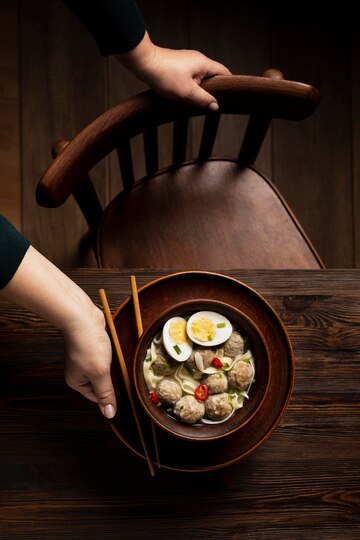
Ramen, a humble yet iconic Japanese dish, has transcended its origins to become a global sensation. From bustling Tokyo street stalls to trendy urban eateries worldwide, ramen’s allure lies not only in its comforting warmth but also in its rich history and diverse flavors. Let’s embark on a culinary journey to explore the art and essence of ramen.
A Brief History
Ramen’s roots can be traced back to China, where wheat noodles were first introduced. It wasn’t until the late 19th century that ramen, as we know it today, emerged in Japan. Initially served as a simple noodle soup with Chinese-style wheat noodles, ramen underwent a transformation over the years, evolving into a dish uniquely Japanese.
During the post-World War II era, ramen gained popularity as an affordable and filling meal, especially among the working class. Street vendors and small eateries known as “ramen-ya” proliferated, each offering its own take on the dish. Ramen became ingrained in Japanese culture, evolving into a culinary phenomenon celebrated for its depth of flavor and versatility.
The Anatomy of Ramen
At its core, ramen comprises four essential components: noodles, broth, toppings, and seasonings. However, within these basic elements lies a world of variation and complexity Turfok.net/ .
Noodles: The foundation of any bowl of ramen, noodles come in various shapes and thicknesses, each suited to different broth styles. Traditional ramen noodles are made from wheat flour, water, salt, and an alkaline mineral water called kansui, which gives them their distinct springy texture and yellow hue.
Broth: The soul of ramen, broth forms the base of the soup and sets the flavor profile. There are four primary types of ramen broth: shoyu (soy sauce), shio (salt), miso (fermented soybean paste), and tonkotsu (pork bone). Each broth undergoes hours of simmering to extract maximum flavor from ingredients like bones, vegetables, and aromatics.
Toppings: Ramen toppings add depth, texture, and visual appeal to the dish. Common toppings include sliced chashu (braised pork belly), menma (fermented bamboo shoots), nori (dried seaweed), ajitsuke tamago (marinated soft-boiled egg), and scallions. Chefs often personalize their ramen with unique additions, reflecting regional preferences and creative flair.
Seasonings: A final touch of seasoning enhances the overall flavor profile of ramen. Condiments like chili oil, sesame seeds, grated garlic, and vinegar allow diners to customize their bowls according to their taste preferences.
Regional Varieties
While ramen is synonymous with Japanese cuisine, regional variations abound, each distinguished by its unique ingredients, techniques, and flavor profiles.
Hokkaido: Known for its harsh winters, Hokkaido boasts a rich and hearty style of ramen characterized by a creamy tonkotsu broth and thick, curly noodles. Additional toppings often include butter, sweet corn, and seafood such as scallops and crab.
Tokyo: Tokyo-style ramen features a clear shoyu or shio broth paired with thin, straight noodles. Toppings are typically minimalist, with sliced chashu, menma, and nori being the most common additions.
Kyushu: Hailing from the southern island of Kyushu, tonkotsu ramen reigns supreme. The broth, made from simmered pork bones, is thick, creamy, and intensely flavorful. Thin, straight noodles and a generous portion of sliced chashu are customary accompaniments.
The Ramen Renaissance
In recent years, ramen has experienced a global renaissance, captivating food enthusiasts and chefs alike with its depth of flavor and culinary versatility. Beyond Japan, ramen has found a devoted following in cities around the world, from New York to London to Sydney.
This resurgence has spurred innovation and creativity, leading to the emergence of fusion ramen incorporating elements from other cuisines. Korean-inspired kimchi ramen, Thai curry ramen, and even vegetarian and vegan ramen options have become increasingly prevalent, catering to diverse dietary preferences and palates.
Conclusion
Ramen, with its rich history, diverse flavors, and universal appeal, transcends cultural boundaries to unite food lovers worldwide. From its humble beginnings as a simple noodle soup to its status as a global culinary phenomenon, ramen continues to captivate and inspire, reminding us of the transformative power of food to nourish both body and soul. So, the next time you find yourself craving comfort and flavor in a single bowl, consider embarking on your own ramen journey—you may just discover a world of culinary delights waiting to be explored.


:max_bytes(150000):strip_icc()/GettyImages-1016321034-4e93d0dc223b48f4a9df61984730eb8e.jpg)

